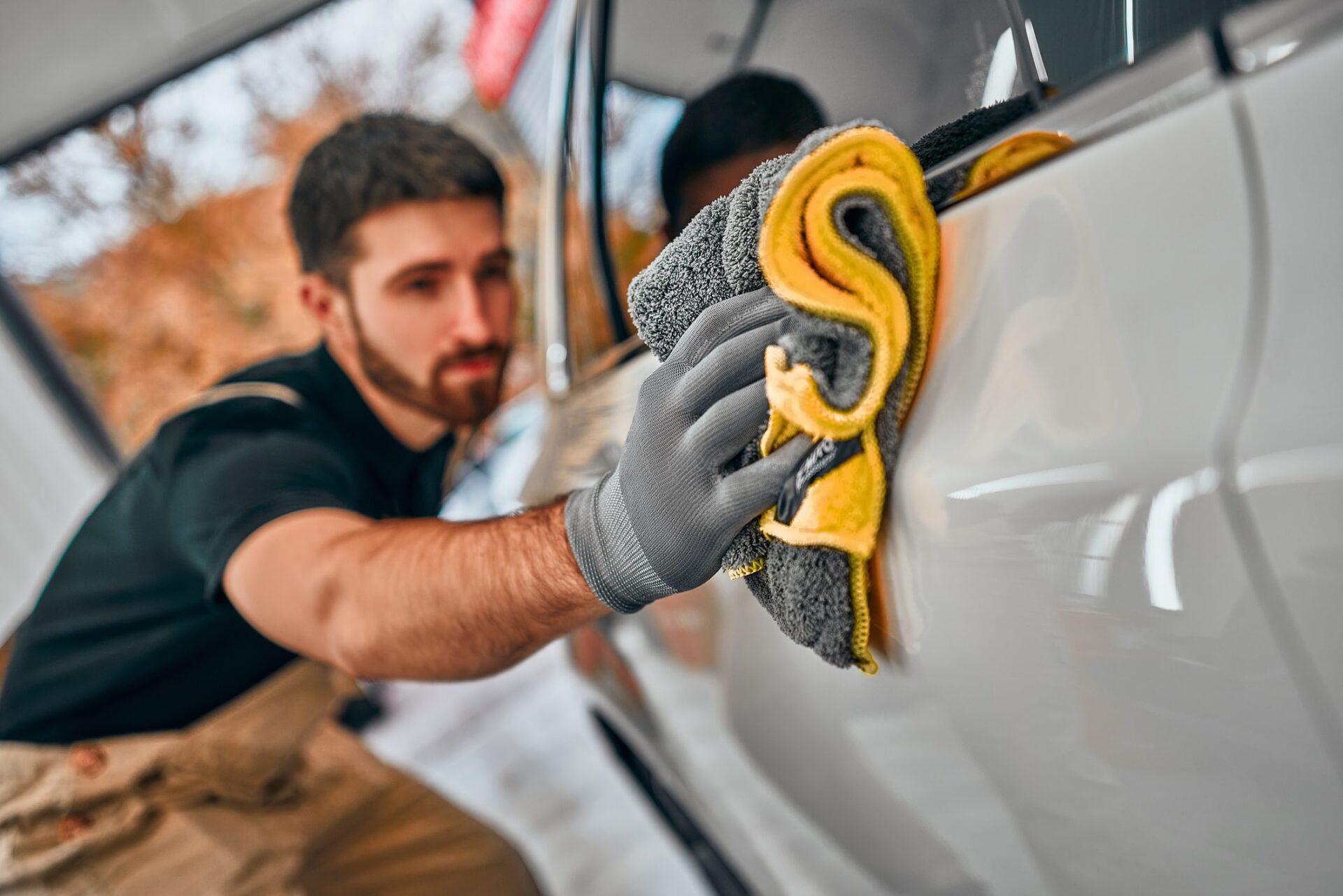Professional car detailing is a process that goes far beyond merely washing your vehicle. Also known as “car valeting,” this type of cleaning is more precise and labor-intensive than a run through an automated car wash. For more information, click the Website to proceed.
Detailing includes the usual cleaning processes but also involves protection stages to preserve and enhance surfaces. Here are a few reasons why you should invest in regular detailing services:

Newer vehicles come from the factory with paint protectants and several layers of protective coating. However, these protectants wear off over time due to contaminants and the elements. Keeping the vehicle’s finish in good condition keeps the car physically attractive and maintains resale value. In addition to detailing, other protective processes like PPF, ceramic coating, and wax can be used to preserve the appearance of a vehicle.
During a detailing job, the car’s surfaces are cleaned to remove dirt and other foreign debris from the surface. This process helps prevent damage by reducing the amount of dirt accumulating on the vehicle’s body and trim. It is important to note that detailing does not include repairing deep scratches or dents, as a professional body shop should address these issues.
Many detailing products work best when applied to cool surfaces, so it is important to be done indoors or in the shade. Applying these products to hot surfaces can cause them to dry quickly, which leads to water spots and streaks. In these instances, a water spot remover spray may be needed to remove stubborn marks and streaks. Prevents Odors
When a gallon of milk spills on the front seat, carpeting, floor mats, and headliner in your vehicle, it will emit odor molecules that will permeate everything within the car. Professional detailing companies use different degreasers, steam cleaners, and high-powered vacuums to extract the contaminants. They also use specialized products like ozone generators and commercial-grade odor eliminators that neutralize the odors at the molecular level rather than simply masking them. They may even clean and deodorize the ventilation system to prevent the re-circulation of the odors in your car. This is a very important step in preventing lingering odors.
The same techniques can be used to remove embedded tar and bugs from your car’s exterior surfaces.
The quality of a metal polish depends on the grit size, which varies from coarse to fine. Changing the grit size can change the luster of the finished product, but it can be difficult to determine the correct abrasive for each material. Maintaining a steady speed on the buffing machine is important, and the abrasive pad should be lubricated to prevent heat buildup and burns. Adding too much pressure to the buffing pad can cause permanent damage.
Metal polishing is a necessary process for many manufacturing processes. Metals such as chromium and aluminum must be polished after they are cut to provide the proper shape and surface for production. This process can also be used to remove oxidation and improve the quality of the metal. It can also be used to remove burrs that can cause unexpected damage to equipment.
There are many types of polishing surface finishes, each with benefits and drawbacks. Mechanical polishing is a popular method that uses abrasive materials, such as sandpaper, flat wheels, and abrasive sticks, to smooth the surface of a material. This polishing method is low-cost but may not be as bright as chemically polished products.
Chemical polishing uses a chemical solution to dissolve the surface of a part and produces a bright, shiny luster that is resistant to corrosion. However, it is expensive and requires large machinery. Electrochemical polishing is a low-cost and environmentally friendly alternative to chemical polishing, but it cannot be easy to control the temperature of the solution.
Sealing is the joining technique of materials with a substance that adheres to the surfaces to be joined and transfers the forces from one adherent to the other. Various glues, epoxies, and plastic agents are used to perform this function. This type of joining is also known as a mechanical seal or gasket.
A seal is an impression in melted wax or some other material that was once used to authenticate documents, as in the case of certificates of birth, marriage, or deeds of real estate. Seals are now more often used in signing documents by a notary public or corporation and as an indication that a document was officially witnessed.
When it comes to fluid sealing, there is no one-size-fits-all approach. A good detailer will listen carefully to the customer’s needs and then recommend the best methods for that application. This will help avoid easily preventable trial and error that wastes time and money. For example, a customer may want to reduce water use at their plant by adding closed-loop systems. The detailer can then suggest the best techniques to achieve that goal, such as sealing and brazing. By utilizing the appropriate technology, the customer will save money and time while reducing the amount of fluids they send to the sewer system.
Waxing is a form of hair removal that pulls the unwanted hair from its roots. It is a semi-permanent treatment that lasts for four to six weeks. It is a good alternative to shaving, which can cause nicks and cuts. Waxing also does not leave behind any unwanted residue.
Before waxing, the skin should be clean and dry. Then, the technician will apply a pre-wax treatment to prevent irritation. A clean application tool is then used to apply a thin layer of wax to the area. Then, a cloth or paper strip is placed over the wax, and the whole strip is removed against the direction of hair growth. After the waxing procedure, the skin may feel red and slightly irritated. But this usually subsides within a few hours. An over-the-counter hydrocortisone cream can reduce inflammation if the skin is especially sensitive.
Various waxing methods are available, including hard and soft waxes. Soft waxes are usually made from natural ingredients like honey or sugar and melt with body heat. They can be used on most body areas but are particularly effective for the face. Soft waxes are typically better for people with sensitive skin than hard waxes, which contain chemicals.
Unlike shaving, which removes the hair at the skin’s surface, waxing pulls it from the root. This can reduce the thickness and frequency of hair regrowth. It can also make each strand of hair finer and softer. However, there are some concerns about the long-term effects of repeated waxing on hair follicles.
While waxing is generally safe for most people, there are a few things to remember. If you’re considering getting a wax, choose a licensed esthetician. They should have a clean working area and wear disposable gloves. They should also never reuse wax for more than one person. If they do, it can contain bacteria and viruses that can cause infections. Also, using a clean applicator, such as a popsicle stick, is important.
Waxing is not only an effective way to reduce surface scratches, but it can also boost a car’s clear coat protection. Without waxing, a vehicle’s clear coat can bleach out over time and expose the paint to road salt and oxidation elements. This can damage the clear coat and paint, requiring expensive repairs or replacement.
To avoid this, a car owner should always have their vehicle waxed a few times a year. For the wax to last, however, it must be applied properly. The car should be washed only a few times a week, as this can reduce the wax’s staying power. Depending on the type of wax and the weather conditions, it may be necessary to apply another coat after six months.
Car detailers clean the interior of vehicles to remove surface-level dirt and debris, refresh upholstery, eliminate odors, and create a polished look. They may use specialized products for leather interiors, which require conditioning to prevent cracking and to maintain a soft feel. They also wash and vacuum carpets, sanitize cup holders, door pockets, and floor mats, and apply cleaning and restoration agents. They may also shampoo, steam clean interior surfaces, and vacuum exterior trim and tires to remove dust, dirt, and road grime. They inspect vehicles for additional cosmetic needs and report any malfunction or damage to the mechanic or manager.
They clean the windshield, windows, and side mirrors of cars to improve visibility and safety. They may also clean the inside of the car’s trunk, hood, and engine compartment to remove trash, dirt, oily buildup, and bird droppings. They may also clean the wheels and tire trim to preserve a polished look. They also clean and polish headlights, windshield wipers, driver’s seat, steering wheel, and floorboards.
Car detailers must have excellent customer service, communication, and interpersonal skills to perform their job. They must be able to follow written and verbal instructions, be attentive to customers’ questions, and be physically fit to stand for long periods. They must be proficient in using various cleaning tools, including pressure washers, hoses, buffers, steamers, and vacuums. They also need to know how to operate these machines safely and efficiently. Additional qualifications include attention to detail, patience, hand-eye coordination, physical stamina, and working alone. Applicants should be willing to work weekends and holidays, too. They should also be willing to participate in training and certification programs, meet productivity goals, and maintain high customer satisfaction.

